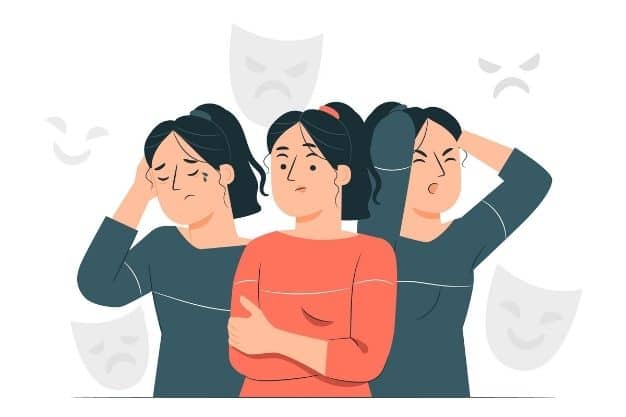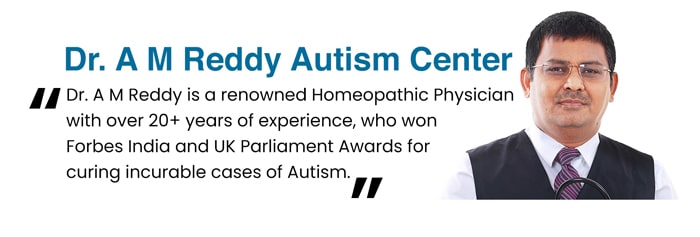Several emotional and behavioral difficulties affect children and adolescents, including disruptive, depression, anxiety, and pervasive developmental (autism) disorders, classified as either internalizing or externalizing difficulties.
“Temper tantrums, attention deficit hyperactivity disorder, oppositional, defiant, or conduct disorders are the most frequent behavioral difficulties in preschool and school-age children.”
Dr. AM. Reddy Autism Centre is ideal for families to deal with emotional and behavioral disorders. They have numerous desirable measures that make them excellent for offering efficient mental health treatment to children and adolescents. You may be reviewing this checklist because you are interested in one of these specific diseases or seek information about emotional and behavioral disorders in general.
We refer to psychological issues by several “umbrella” words, such as emotional disturbance, behavioral disorders, or mental disease. A vast range of particular diseases differs in their features and treatment under these umbrella words. These include:
- Anxiety disorders
- Bipolar disorder (also known as manic-depression)
- Conduct disorders
- Eating disorders
- Obsessive-compulsive disorder (OCD)
- Psychotic disorders
In any event, please keep reading to know what various emotional diseases have in common, how they are classified in federal law, and where to discover more thorough information on individual disorders.

Emotional and Behavioral Disorders: What Are They?
Emotional and behavioral disorders are mental diseases that create serious issues with both emotions and actions. It impacts a child’s functioning in most, if not all, parts of their life. Emotional and behavioral disorders (E/BD) make it difficult for a kid to manage emotions and choose appropriate conduct in various scenarios.
A child’s capacity to be successful in school, manage thoughts and behaviors, and be happy in general is harmed by emotional and behavioral problems. These disorders impact the entire child, including feelings, actions, social development, and cognitive performance. Children with E/BD have a difficult time coping with life’s many demands.
Characteristics
As stated in the IDEA definition, emotional disturbances can impact an individual in areas other than the emotional. The mental condition may harm a person’s physical, social, or cognitive abilities. The National Alliance on Mental Illness (NAMI) says it best:
- Mental disorders are physical problems that interfere with thoughts
- Feelings
- Capacity to interact with others
- Everyday functioning
Just as diabetes is a pancreatic disorder, mental disorders are medical conditions that frequently result in a reduced ability to cope with everyday life responsibilities.
The following are some of the characteristics and behaviors observed in children with emotional disturbances:
- Withdrawal (not associating socially with others, extreme fear or worry)
- Hyperactivity (short attention span, impulsiveness)
- Aggression or self-injurious conduct (acting out, fighting)
- Immaturity (excessive sobbing, temper outbursts, and poor coping skills)
- Learning Disabilities (academically performing below grade level)
Children with severe emotional disorders may demonstrate skewed thinking, excessive anxiety, strange motor behaviors, and odd mood swings.
Many children who do not have emotional problems may display some of these similar behaviors at various stages of development. When children encounter an emotional disturbance, though, these behaviors might last for a long time. Their behavior suggests that they are unable to cope with their surroundings or classmates.
Specific Diseases
As previously stated, emotional disturbance is a catch-all phrase for various mental diseases. Let’s check frequent specifications.
Anxiety Disorders
It is something we all face from time to time, but anxiety may be intense, chronic, apparently uncontrolled, and overpowering for many individuals, especially children. An unreasonable fear of ordinary circumstances may be involved. This high degree of anxiety indicates that a person may be suffering from an anxiety disorder.
“Anxiety disorder,” like “emotional disturbance,” is an umbrella term that refers to various separate impairments that share the underlying trait of unreasonable fear: GAD, obsessive-compulsive disorder (OCD), panic disorder, posttraumatic stress disorder (PTSD), social anxiety disorder (also known as social phobia), and particular phobias are all examples of anxiety disorders.
According to the study, anxiety disorders are the most frequent mental conditions affecting both children and adults. They are also quite curable. Unfortunately, only around one-third of people who are impacted obtain treatment.

Bipolar Disorder
Bipolar disorder is known as manic-depressive disease. It is a serious medical condition marked by extreme mood fluctuations that range from “high” and irritable to despondent and hopeless, and back again. Severe alterations in energy and behavior accompany these emotional swings.
Most people with bipolar disease can have mood fluctuations. They accompany the signs stabilized over time with a combination of medication and psychological counseling.
Conduct diseases
Conduct disorder is a collection of emotional and behavioral issues that affect children. Children and teenagers with this disease struggle to follow the rules and behave in a socially acceptable manner. This might involve the following behaviors:
- Aggression toward people and animals
- Damage of property
- Dishonesty
- Lying
- Stealing
Even though conduct disorder is one of the most challenging behavioral diseases to treat, young people frequently benefit from a variety of services, which include:
- Training for parents on how to deal with their child’s or adolescent’s conduct
- Family therapy
- Problem-solving skills training for children or adolescents
- Community-based services focus on the young person in the context of family and community influences.
Eating Disorders
Extremes in eating behavior—either too much or too little—or emotions of intense anxiety or concern over body weight or form define eating disorders. Females are far more prone to develop an eating issue than guys.
The two most frequent eating disorders are anorexia nervosa and bulimia nervosa. Anorexia nervosa is characterized by self-starvation and rapid weight loss. Bulimia nervosa is characterized by a cycle of binge eating followed by self-induced vomiting or purging. Both of these diseases have the potential to be fatal.
Binge eating is classified as an eating disorder as well. It is characterized by excessive food consumption while feeling powerless to control how much or what is consumed. Unlike those who have bulimia, people who binge eat do not generally purge afterward by vomiting or using laxatives.
The National Eating Disorders Association states:
Together with careful attention to medical and nutritional needs, psychotherapy or counseling is the most effective and long-lasting treatment for an eating disorder. Certain medicines have been demonstrated to be beneficial. Ideally, whatever treatment is provided should be personalized to the individual, and this will vary depending on the degree of the disease and the patient’s specific issues, requirements, and strengths.
Obsessive-Compulsive Disorder (OCD)
Obsessive-compulsive disorder, sometimes known as OCD, is a kind of anxiety condition (which was discussed earlier in this fact sheet). Obsessive-compulsive disorder (OCD) is characterized by recurring, unwanted thoughts (obsessions) and repeated activities (compulsions). Repetitive actions (handwashing, counting, checking, or cleaning) are frequently conducted to prevent or remove obsessive thoughts. However, executing these so-called “rituals” brings only brief respite, and failing to complete them increases anxiety.
According to researchers, OCD is caused by a chemical imbalance in the brain. Most persons with OCD should get one or more of the following treatments:
- An expert therapist who has received training in behavior therapy
- Cognitive Behavioral Therapy (CBT)
- Prescripted medicines (usually an antidepressant)
Mind Abnormalities
Another known name for severe mental diseases that induce aberrant thoughts and perceptions is “psychotic disorders.” Illusions and hallucinations are two of the most common symptoms. Fantasies are mistaken beliefs, such as suspecting someone of scheming against you. Hallucinations are mistaken perceptions, such as hearing, seeing, or experiencing something that isn’t there. One sort of psychotic disease is schizophrenia. There are a few more.
Treatment for psychotic diseases varies from person to person, depending on the disease at hand. The majority of patients are treated with a mix of medicines and psychotherapy (a type of counseling).
Treatment using Homeopathy
Families generally require assistance in understanding their child’s disability and addressing the needs that develop due to the condition. Positive autism professionals that operate in the field can assist you. To address emotional and behavioral disorders, every state and locality has a network of mental health support services.
To locate assistance services in your area or state, please visit our website or call us. Specialists can connect you with local resources such as support groups, which provide connection and understanding, information, referral, and support to those suffering from emotional and behavioral disorders.
If you are worried about your kid’s abnormal behavior, We have assured satisfaction, for more details call us: For India use: +91 7674004000, +91 7337440845 , For USA use: +1347 726 9005 or WhatsApp us (if you belong to any country).
We provide Online Consultation also. Book Prior Appointment for Weekend Consultation.
For More Info, Visit Our Website: Dr. A M Reddy Autism Centre
Note: Online Consultation Available via Zoom/ WhatsApp/ Video Call! 15 days Prior Appointment is Available.

